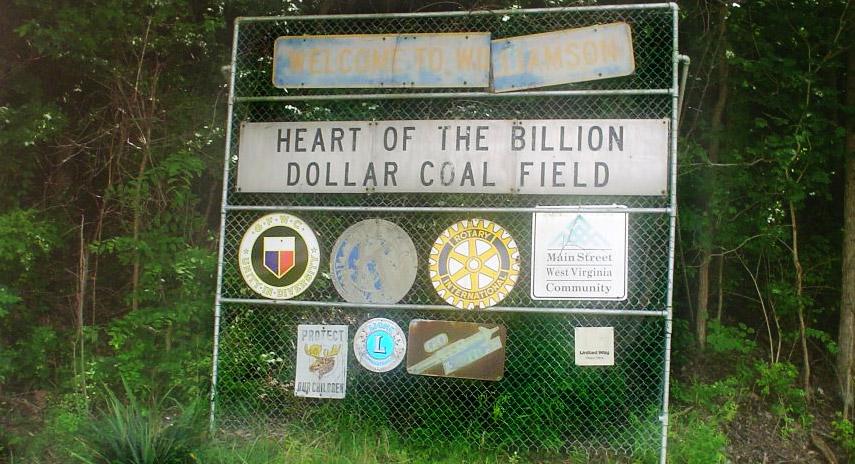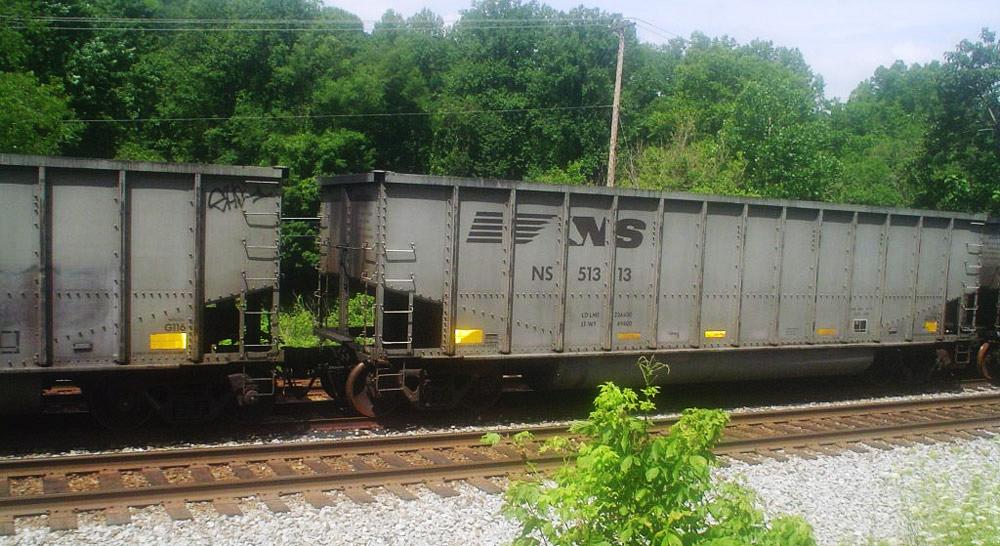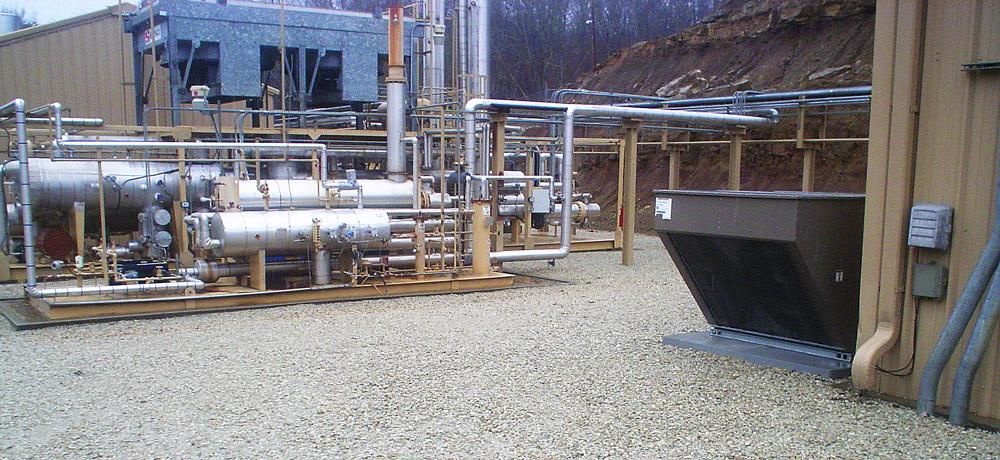AWS CWI, CWE, NDE Level III
- FMA
- The Fabricator
- FABTECH
- Canadian Metalworking
Categories
- Additive Manufacturing
- Aluminum Welding
- Arc Welding
- Assembly and Joining
- Automation and Robotics
- Bending and Forming
- Consumables
- Cutting and Weld Prep
- Electric Vehicles
- En Español
- Finishing
- Hydroforming
- Laser Cutting
- Laser Welding
- Machining
- Manufacturing Software
- Materials Handling
- Metals/Materials
- Oxyfuel Cutting
- Plasma Cutting
- Power Tools
- Punching and Other Holemaking
- Roll Forming
- Safety
- Sawing
- Shearing
- Shop Management
- Testing and Measuring
- Tube and Pipe Fabrication
- Tube and Pipe Production
- Waterjet Cutting
Industry Directory
Webcasts
Podcasts
FAB 40
Advertise
Subscribe
Account Login
Search
Fabricating in the coal mining region undergoes transformation
- By Professor R. Carlisle "Carl" Smith
- August 26, 2015
- Article
- Shop Management
For many years coal has been king in West Virginia and many other Appalachian states.
Coal was first found near Richmond, Va., in the late 1700s. Coal fueled the trains that expanded the country westward. Towns and cities frequently were established by the coal industry, and many are named for them. These companies built housing for the miners to entice them to move to the area. Several "company houses" that were built in the early 20th century still are standing, even though the area has been mined out. Some of them have been remodeled to appear different from the old company row houses.
The coal companies owned the "company stores,", which often took advantage of the miners by issuing "script," which was a monetary token that could be used to make purchases from the stores. Some of the miners owed the company a good portion of their pay before payday, a situation similar to the overuse of a credit card. Tennessee Ernie Ford wrote a song with the lyrics, "I owe my soul to the company store."
A few of the buildings are still standing and house various businesses. Some are decorated like the original company stores and have become restaurants and tourist attractions.
Bramwell, W.V., was once said to be the wealthiest town in the U.S. per capita. Several coal barons built there. The town is still standing and is a famous tourist attraction. Its massive mansions are a sight to see.
Immigrants from across the world moved to the coalfields to earn their fortunes. These people were very hard workers who mostly saved their money and started their own businesses. Some sent their children to colleges to become professionals. Most of the famous Italian restaurant owners in the Appalachian states are descendants of these immigrants. W. Va. Senator Joe Manchin is a descendant of an immigrant family that started several successful businesses in West Virginia that still are operating.
States, small towns, and large cities have depended on the revenue from the coal industry for decades. Many families have had several generations who worked in the mines and would not want to do anything else. Ask a miner why he likes his job so much and he will ask you, "Do you work in an environment that has the same temperature all day and night with no snow, hot sun, or rain?"
Even though there have been some terrible mining disasters over the years, miners still would rather work underground. The number of underground miners killed is less than construction or truck driver deaths. Most of the miners are family-loving people who are distraught at the thought of having to leave their life-long homeplaces but have little hope of being able to remain in the Appalachian area.
It is extremely disheartening to drive through the area that was once the heart of the billion-dollar coal industry. Miles of empty coal cars line the rusty tracks that once carried millions of tons of coal. Stores and restaurants are boarded up, and empty houses are commonplace (Figures 1 and 2).
The mining equipment repair shops that once hummed with work now are closed or keeping only a few mechanics and welders working.
The support businesses for the coal industry also have closed or have attempted to diversify into other markets.
The overall population is rapidly declining.
Reasons for the Dilemma
There is still enough coal in these here hills to supply energy needs for the next 132 years (Bloomberg, 2012). Some areas that are said to be mined out still could produce coal by alternate methods, such as mountaintop mining or high-wall mining. In the past, these methods scarred the mountains, which were not replenished with plant life. Now, trees and grass flourish, and in several cases ponds are stocked with fish.
It is not uncommon to see deer grazing on the hills that were once barren. Also, shopping centers and other industries now are occupying some of the flattened areas.
The greatest single reason for the decline in coal production are regulations set by the Environmental Protection Agency (EPA). The current administration has warned coal-fired power plants that if they continue to use coal, they will be put out of business.
Some of the largest electric companies in the U.S. have decided to retire coal-fired power plants to the tune of more than 20 gigawatts in 2015 alone. This is enough electricity to provide power to more than 15 million homes. This move could cause brownouts, or even blackouts.
What to Do?
If Appalachia is going to be ready for the "carbon capture" movement, training must begin now. Much of the research and development for the CO2 reduction and carbon capture has been performed in West Virginia by an organization called Matrix. Early on, and even now, fabrication of equipment for the experimental phase of this project has been provided by local fabricators. This brings hope for the future of the whole Appalachian industrial market.
The government has projected funding of $5 billion in aid for coalfield communities. If these funds are used to retrain workers to perform other jobs and help start new businesses, the outlook for these communities could be much brighter. West Virginia's governor and educational leaders have already begun to supply training for the future.
More than a year ago when the news began to flow about the decline in the mining industry, state officials took notice of the need for special training. Funding was appropriated for a new Community and Technical College facility for real hands-on training in Williamson, W.V. The governor, the president of the college, the technical college chancellor, and the community saw a need for retraining displaced coalfield workers and young people from the area who would be entering a nonmining workforce.
The facility offers welding and mechatronics courses. Its equipment is state-of-the-art in both areas to provide students with the most up-to-date skills training available (Figure 3).
The welding instructors are well-versed in fabricating different types of weldments including not only repairing and maintaining not only mining equipment, but also aluminum trailers for the trucking industry. The training also comprises the different types of welding and fabricating required by the oil and gas industry, the current leader in power plant fueling (Figure 4). The mechatronics curriculum provides training for the oil and gas industry's complicated instrumentation.
Diversification
Area manufacturers and fabricators now are branching out in many directions, seeking new markets and producing new products. They are shipping the same machinery they once produced for the local coal companies to other parts of the U.S. and to other countries. In fact, the two largest mining equipment manufacturers in the state now are selling more machinery to foreign countries than to U.S. companies.
The same equipment used to mine coal can be used to mine other natural resources. Copper mining uses the same type of removal equipment, roof bolters, roof jacks, and underground locomotives, as do limestone and other aggregate material mining.
China, Poland, and Australia seem to be the major mining equipment purchasers. Australia has purchased one of the oldest and largest manufacturers in the state and has built a huge plant. The upside is that this company is hiring local people, including welders, fitters, and engineers. It has several locations in the eastern U.S., as well as in the West and Midwest.
The other very large manufacturer of mining equipment still is locally owned and operated. This company saw the handwriting on the wall some years ago and began moving into foreign markets and building equipment for other types of mining. It also rebuilds and repairs mining equipment and uses several local fabricators to support its overload. The company trains both its in-house workers and outsourced personnel.
The experienced engineers at this company customize equipment design to meet the application. Some mineral mining requires heavier machinery than needed for coal mining.
New Directions
When the oil and gas drilling boom hit the area, everyone wanted a piece of the action. As horizontal drilling and fracturing methods began to be used, drill rigs had to be modified and new equipment built. Piping for the well and compressor stations can easily be fabricated inside shops (Figure 5).
Buildings for the control stations also comprise a sizable portion of this booming industry. These buildings, which are placed on skids that contain the controls and piping, are not complicated to build and are a good fit for most fabricating shops. The skid's base usually is made using rectangular tubing on the outer perimeter and the internal cross members. The sides and roof are fabricated from aluminum or vinyl siding supported by galvanized angle iron.
Some large manufacturers and fabricators also have begun to make and repair products for the oil and gas industry, which require considerable investment in equipment and personnel training. Historically, oil and gas industry workers have made higher wages than those in most fabrication shops. This often causes some controversy when new workers are hired from the outside. In some cases, current workers can be retrained, but this training can be quite expensive and time-consuming for companies that wish to hit the ground running.
Some fabricators are returning to trade schools and community colleges. These institutions often hire instructors with experience in the skills that the courses are seeking to teach. Many are retired from the very jobs that they are training students to perform.
It is still a long path to tread, but the educational and industrial communities are working with the federal and state governments to make the coal area a thriving economy again. The outlook is much better now than when the decline began.
About the Author

Professor R. Carlisle "Carl" Smith
Weld Inspection & Consulting
PO Box 841
St. Albans, WV 25177
304-549-5606
subscribe now

The Fabricator is North America's leading magazine for the metal forming and fabricating industry. The magazine delivers the news, technical articles, and case histories that enable fabricators to do their jobs more efficiently. The Fabricator has served the industry since 1970.
start your free subscription- Stay connected from anywhere

Easily access valuable industry resources now with full access to the digital edition of The Fabricator.

Easily access valuable industry resources now with full access to the digital edition of The Welder.

Easily access valuable industry resources now with full access to the digital edition of The Tube and Pipe Journal.
- Podcasting
- Podcast:
- The Fabricator Podcast
- Published:
- 04/16/2024
- Running Time:
- 63:29
In this episode of The Fabricator Podcast, Caleb Chamberlain, co-founder and CEO of OSH Cut, discusses his company’s...
- Trending Articles
How to set a press brake backgauge manually

Capturing, recording equipment inspection data for FMEA

Tips for creating sheet metal tubes with perforations

Are two heads better than one in fiber laser cutting?

Hypertherm Associates implements Rapyuta Robotics AMRs in warehouse

- Industry Events
16th Annual Safety Conference
- April 30 - May 1, 2024
- Elgin,
Pipe and Tube Conference
- May 21 - 22, 2024
- Omaha, NE
World-Class Roll Forming Workshop
- June 5 - 6, 2024
- Louisville, KY
Advanced Laser Application Workshop
- June 25 - 27, 2024
- Novi, MI































